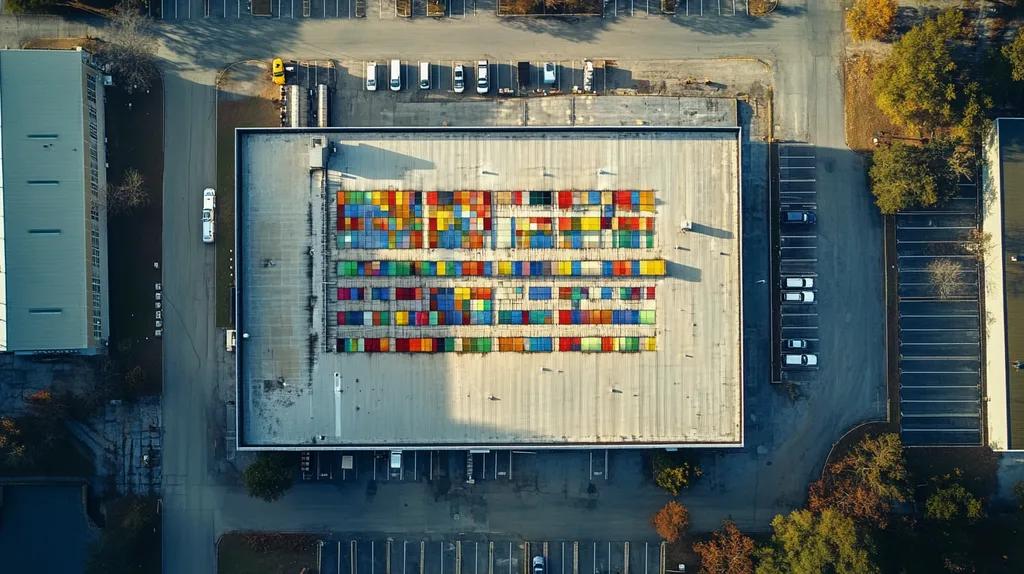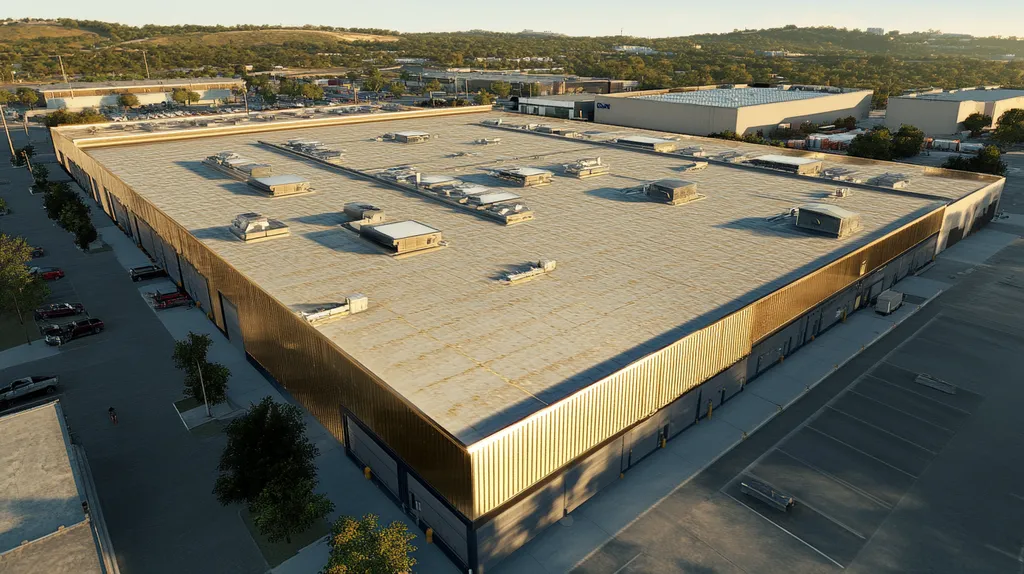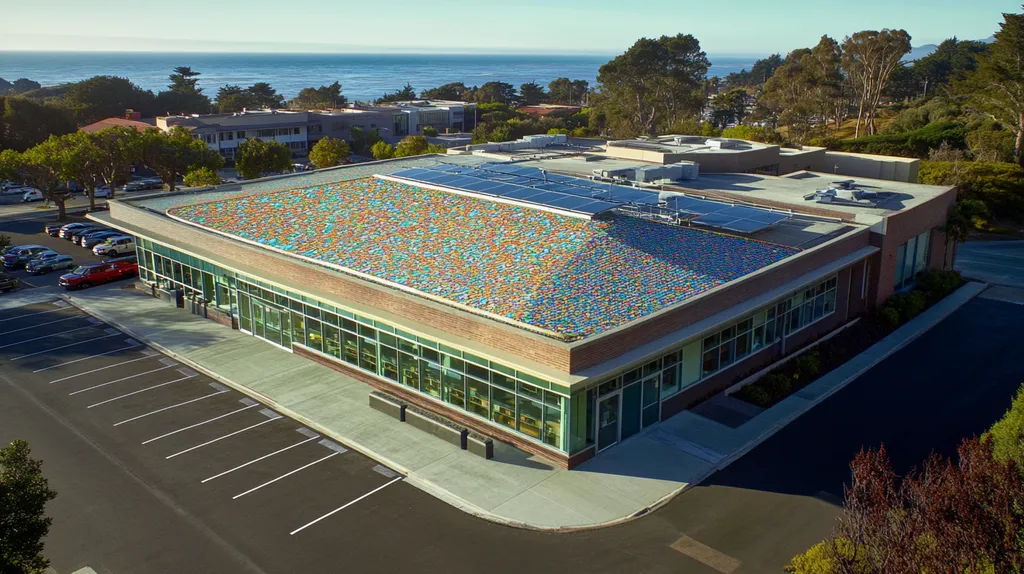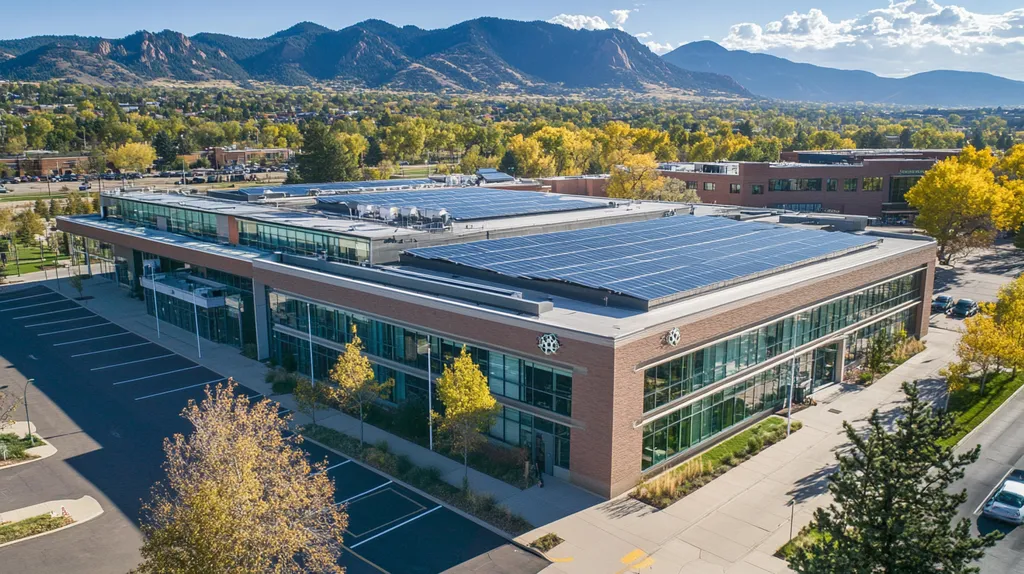Industrial roof inspections can mean the difference between a manageable maintenance budget and catastrophic repair costs that devastate a facility’s bottom line. Industry data shows that proactive inspections reduce unexpected roofing expenses by up to 40% while extending roof lifespans by 7-10 years.
For facility managers and property owners, understanding the complex components of roof inspection – from membrane integrity to drainage systems – is crucial for making informed financial decisions.
This comprehensive guide examines the critical elements of industrial roof inspections, providing actionable insights for developing cost-effective maintenance strategies that protect valuable roofing investments.
SECTION 1: FUNDAMENTAL CONCEPTS
Regular inspections of industrial roofs are not just a standard procedure; they are essential for managing costs and maximizing the lifespan of the structure. Statistics show that proactive inspections can save property owners as much as 30% on unexpected repair expenses. The consequences of neglect can be severe, with minor issues potentially leading to major failures that disrupt operations and threaten financial stability. This section will explore the critical role of routine inspections, the different types available, and how examining historical data can inform accurate cost estimates.
Importance of Regular Inspections
Regular roof inspections are the cornerstone of effective maintenance strategies for industrial roofs. Without these routine evaluations, small problems can quickly escalate, resulting in expensive repairs and unplanned facility downtime. By prioritizing inspections, property owners can catch vulnerabilities before they turn into significant challenges.
The frequency of inspections should align with the specific type of roofing system installed. For example, a single-ply membrane roof necessitates different oversight compared to a built-up roofing system. Customizing the inspection approach based on roof type enhances effectiveness and helps keep costs in check.
Furthermore, inspections can reveal underlying issues such as insulation problems or hidden moisture that may not be apparent at first glance. Identifying these concerns early can lead to lower energy costs and extend the life of the roofing system.
In summary, regular inspections are vital for preserving roofing integrity, safeguarding investments, and ensuring smooth operations. For industrial facilities, where downtime can be costly, taking proactive measures through inspections translates into significant long-term savings.
Types of Industrial Roof Inspections
Industrial roof inspections vary in scope and technique, tailored to the unique needs of each facility. The most common type is the visual inspection, which offers a broad assessment of the roof’s condition by focusing on visible signs of wear and tear, like blistering, water ponding, and debris damage.
For a more advanced option, infrared inspections utilize thermal imaging technology to pinpoint hidden moisture within roof layers. This method uncovers issues that a basic visual inspection might overlook, providing a deeper understanding of the roof’s health.
Destructive testing is another method that may involve taking core samples from roofing materials to evaluate their condition. While this approach can be invasive and is generally conducted only when necessary, it offers valuable insights into the overall health of the roof.
In addition, drone inspections have become a practical, cost-effective alternative, allowing for safe, high-resolution evaluations without the need for ladders or scaffolding. This innovative approach improves safety while providing crucial data for ongoing maintenance and management decisions.
Historical Data Analysis
Using historical data analysis is essential for gaining insights into roofing performance and ongoing maintenance needs. Analyzing past inspection reports, repair histories, and weather patterns can reveal how roof systems perform under specific conditions.
For instance, facilities in regions prone to heavy rainfall can benefit from reviewing historical data to anticipate potential water damage based on previous occurrences. This foresight enables property managers to make proactive adjustments to inspection schedules and maintenance practices.
Moreover, trends in data can signal the need for replacing roofing materials before critical failures occur, helping avoid unexpected costs. Understanding these patterns allows property owners to develop a well-informed strategy for budgeting and planning future roofing expenditures.
Ultimately, historical data analysis empowers property managers to make intelligent, data-driven choices about roofing investments. This not only secures physical assets but also fosters sustainable operations within the facility over the long haul.
SECTION 2: SYSTEM COMPONENTS
The state of an industrial roof is critical to controlling maintenance costs and ensuring its longevity. Inspections should prioritize three vital components: the roof surface and membrane, drainage systems, and penetration seals. A careful evaluation of these elements can prevent costly water damage and preserve the structure’s integrity. Neglecting to assess these components can lead to escalating issues, unexpected expenses, and significant operational disruptions.
Roof Surface and Membrane Conditions
The roof surface serves as the first line of defense against the elements. A careful examination of the membrane material is crucial. Common issues include cracks, blistering, and water pooling, each threatening the roof’s effectiveness and lifespan. Identifying these signs early can dictate the need for repairs or even a full replacement.
Inspections should pay particular attention to seams, flashing, and areas already showing wear. If deficiencies are found, prompt action is necessary to avert more drastic damage. The sooner these issues are detected, the less costly the repairs, ensuring a healthier roofing system overall.
Moreover, regular inspections can bolster roofing warranties and insurance coverage. Documenting the surface conditions during evaluations provides a valuable history for tracking changes over time, reinforcing the case for preventive maintenance.
Investing in minor repairs now can lead to significant savings later. When issues are addressed proactively, the lifespan of the roof can be extended, ensuring consistent performance without the burden of unforeseen costs.
Drainage Systems and Gutters
Effective drainage is essential to maintain the health of an industrial roof. Clogged gutters or downspouts can create standing water, drastically increasing the chances of leaks and structural damage. Inspections should focus on any blockages, rust, or deterioration in drainage systems.
When functioning correctly, drainage systems effectively channel water away from the roof. If ignored, stagnant water can compromise the integrity of the roof membrane, resulting in expensive repairs. Regular inspections can help identify areas in need of maintenance, like cleaning gutters or rerouting downspouts.
Performing routine inspections and upkeep of drainage systems is critical for roofing durability. A consistent maintenance schedule not only promotes optimal functionality but also reduces the risk of costly emergency repairs due to water damage.
Additionally, local regulations may mandate inspections of drainage systems for industrial facilities. Non-compliance can incur penalties, amplifying the urgency of this aspect of roof maintenance.
Penetrations and Seals
Each penetration point, whether for HVAC units, vents, or plumbing, presents a potential weakness in the roof’s structure. Over time, seals around these openings may degrade, risking leaks if not properly assessed. Inspections must prioritize evaluating these vulnerable junctions.
Damaged seals can lead to severe problems, especially during heavy rainfall or snowmelt. Ensuring the integrity of these seals should be a significant focus during inspections. Often, resealing is a straightforward task that averts far more costly repairs down the line.
Beyond safeguarding the roof, proper maintenance of penetrations and seals enhances energy efficiency. Well-insulated penetration points reduce heating and cooling losses, translating to lower operating costs.
Thorough documentation and resolution of any issues at these critical components should form part of a strategic maintenance plan. This practice ensures all roof elements remain functional, significantly lowering the likelihood of expensive failures in the future.
SECTION 3: IMPLEMENTATION METHODS
Conducting effective roof inspections is crucial for keeping industrial roofing costs manageable. Without thorough evaluations, property owners risk facing surprise expenses and extended periods of downtime. Industry data indicates that a staggering 75% of roofing failures stem from insufficient maintenance and oversight. By establishing solid preparation, executing inspection protocols with diligence, and creating comprehensive reports, property owners can ensure that their roofing investments truly pay off.
Pre-Inspection Preparation and Scheduling
Preparation for a roof inspection requires thoughtful planning and organization. The schedule should ideally align with seasonal weather patterns to avoid disruptions from rain or snow, which can impede visibility and hinder access. It is best to conduct inspections during mild weather, making it safer and easier to access the roof.
Next, reviewing previous inspection reports and maintenance records is essential. Understanding the roof’s history helps identify potential trouble spots and allows inspectors to concentrate on high-risk areas. Communicating with all relevant stakeholders about the inspection schedule is also vital to minimize disruptions during the process.
Gathering necessary items in advance is crucial for a smooth inspection. Safety equipment and specialized tools should be prepared ahead of time to avoid interruptions. Lastly, it’s important to ensure that any required permits are secured, particularly for high-rise buildings where compliance with regulations is strictly enforced.
On-Site Inspection Procedures
Upon arriving at the site, the first order of business is conducting a safety briefing to ensure all team members understand potential risks. This includes familiarizing everyone with the layout of the roof and identifying safe access points. Safety harnesses and protective equipment must be utilized, especially in elevated areas.
The inspection should follow a systematic approach, starting at the roof’s perimeter and moving inward. Key areas like seams, flashings, and drainage systems require close examination for signs of wear, damage, or moisture intrusion.
Supplementing visual inspections with moisture surveys and thermal imaging can reveal hidden problems that might otherwise go unnoticed. Allocating ample time for this comprehensive process is essential to ensure no costly repairs are overlooked during the evaluation.
Post-Inspection Reporting and Documentation
After completing the inspection, crafting a detailed report is critical for property owners and facility managers. This documentation should include photographs and clear descriptions of the findings, categorized by severity for easy prioritization. Identifying urgent issues early allows owners to address critical repairs without delay.
A cost analysis should accompany the report, outlining expected expenses for necessary repairs, maintenance, and anticipated upgrades. Including timelines for potential interventions aids in budget planning and financial forecasting.
Furthermore, the documentation should recommend preventive measures based on the inspection results. This proactive strategy helps mitigate future risks and extends the roof’s lifespan. Finally, sharing the reports with all stakeholders promotes transparency and facilitates informed decision-making for future roofing needs.
SECTION 4: MAINTENANCE REQUIREMENTS
Regular maintenance is not just beneficial; it is crucial for the longevity and financial efficiency of industrial roofs. Research indicates that well-maintained roofs can endure up to 50% longer than those that are neglected. By addressing maintenance issues early, facility managers can prevent costly repairs and prolong the life of their roofing systems. This section will highlight the importance of routine inspections, common repairs, and the benefits of seeking professional advice.
Routine Inspection Schedules
Establishing a routine inspection schedule is vital for the upkeep of industrial roofs. Ideally, inspections should be performed at least twice a year, particularly before and after extreme weather events. This proactive strategy allows facility managers to spot and resolve potential issues before they escalate.
During these inspections, trained professionals evaluate the roof’s condition, checking for critical signs like pooling water, damaged membranes, or loose flashings. Timely intervention can prevent leaks and significant damage. Additionally, documenting each inspection creates a comprehensive record of the roof’s condition over time.
Facility managers should also schedule inspections immediately after severe storms or high winds, as these can reveal new vulnerabilities. By adhering to a strict inspection timeline, managers can significantly reduce unexpected costs and protect their investments.
Ultimately, regular inspections are a wise investment that leads to a longer lifespan for the roof and minimizes repair costs.
Addressing Common Issues and Repairs
Punctures, blisters, and seams that have come apart are frequent issues faced by industrial roofs. These problems often stem from age, improper installation, or environmental stressors. If not promptly addressed, they can result in water intrusion and severe structural damage.
Once an issue is identified, timely repairs should be prioritized. Small leaks may often be rectified with simple patching methods, while more extensive damage could necessitate significant repairs or even replacement. Swift action not only protects the roof but also prevents related problems, such as mold and mildew, that can emerge from moisture penetration.
Routine maintenance tasks can also include clearing debris from gutters and downspouts, inspecting insulation, and ensuring that drainage systems operate effectively. Taking these steps mitigates the risk of water pooling, enhancing the overall efficiency of the roofing system.
By adopting a proactive stance towards repairs, facility managers can prepare for the inevitable wear and tear that industrial roofs experience. This timely response leads to an extended roof life and reduced overall costs.
Professional Consultation and Guidance
The complexity of roofing systems makes professional consultation indispensable. Property owners gain substantial benefits from the expertise of roofing professionals, who can assess the condition of the roof, uncover hidden issues, and suggest effective maintenance strategies. This professional insight fosters informed decision-making and aids in budget planning.
Regular evaluations by certified roofing contractors can highlight areas of concern that an untrained eye might miss. Furthermore, these experts can share information about new materials or technologies designed to improve roof performance and durability. This knowledge can translate to cost savings over time.
Additionally, consulting with professionals helps facility managers understand their warranties and compliance obligations. Adhering to maintenance requirements can prevent denied claims if roofing failures occur. Thus, maintaining a relationship with a reputable roofing contractor is a strategic move for effective long-term cost management.
Investing in professional guidance is essential to ensure a healthy roof, ultimately protecting the value of the entire facility.
SECTION 5: PERFORMANCE METRICS
Understanding the performance metrics of industrial roofing is essential for property owners and facility managers. A roof’s integrity significantly impacts operational costs, safety, and longevity. Surprisingly, the National Roofing Contractors Association reports that a well-maintained roof can last up to 50% longer than one that is neglected. By evaluating key performance metrics, potential issues can be detected early, enabling informed financial decisions related to maintenance and repairs.
Evaluating Roof Integrity and Condition
Determining the integrity of an industrial roof is vital for assessing its overall condition and associated costs. Roof inspectors focus on structural elements like decking, insulation, and membrane. This thorough evaluation helps uncover vulnerabilities that may lead to leaks or failures down the road.
Utilizing advanced technologies such as thermal imaging enables non-invasive inspections. This technique can expose hidden moisture accumulation, guiding inspectors to areas requiring immediate attention. Regular evaluations not only identify signs of deterioration but also keep repair costs manageable.
Staying on top of routine inspections allows facility managers to make accurate forecasts regarding repair budgets. Documenting these assessments provides a comprehensive record of any changes in roof condition over time, which is crucial for future planning.
Establishing consistent inspection schedules ultimately elongates the lifespan of an industrial roof, ensuring it remains functional and reliable. Failing to prioritize this critical step could lead to substantial replacement costs later on.
Identifying Potential Leak Sources
Leaks are among the most damaging issues affecting industrial roofs, often leading to extensive property damage and rising operational costs. Identifying potential leak sources during inspections is crucial to ensure that proactive measures can be taken before minor issues escalate. Common problem areas include seams, penetrations, and flashings.
A clear understanding of the typical causes of leaks is essential for effective roof management. For example, improper sealant application or poor craftsmanship can contribute to premature roof failure. Regular inspections targeting these vulnerable spots can help avoid costly disruptions.
Advanced diagnostic tools enhance leak detection, allowing inspectors to focus on specific problem areas rather than implementing broad, costly repairs. Training maintenance staff on leak identification methods fosters a more proactive maintenance culture.
Timely detection and remediation of leaks minimize the risk of water damage to internal structures and equipment, ultimately enhancing workplace safety and operational efficiency.
Assessing Environmental Wear and Tear
The surrounding environment significantly affects the wear and tear of industrial roofs. Factors like UV exposure, temperature fluctuations, and severe weather events can lead to accelerated roof degradation. Comprehensive inspections should include an analysis of how these elements influence the roofing material over time.
Roofing materials deteriorate at varying rates based on environmental exposure. For instance, roofs in coastal areas may suffer more due to salt and moisture, requiring more frequent evaluations. Property owners must recognize these environmental factors to budget effectively for necessary maintenance.
Incorporating historical weather patterns into the inspection process aids in predicting the roof’s longevity. Evaluating the roof’s past exposure can guide decisions about whether to replace or upgrade materials to enhance resilience against environmental challenges.
Ultimately, assessing environmental wear and tear provides critical insights that bolster strategic planning. Overlooking this aspect can lead to unexpected costs, undermining the long-term investment in the roof and the overall value of the property.
SECTION 5: PERFORMANCE METRICS
Understanding performance metrics for industrial roofing is crucial for property owners and facility managers. The integrity of a roof directly affects operational costs, safety, and longevity. In fact, the National Roofing Contractors Association states that a well-maintained roof can last up to 50% longer than one that is neglected. By evaluating key performance metrics, property managers can detect potential issues early, enabling informed financial decisions regarding maintenance and repairs.
Evaluating Roof Integrity and Condition
Evaluating the integrity of an industrial roof is essential for understanding its overall condition and associated costs. Roof inspectors assess critical structural elements such as decking, insulation, and membrane to identify vulnerabilities that could result in leaks or failures. A thorough evaluation provides a roadmap for future maintenance and budgeting, ensuring a proactive approach.
Advanced inspection technologies like thermal imaging allow for non-invasive assessments. This technique helps uncover hidden moisture accumulation, directing attention to areas that may require immediate repair. Regular evaluations not only address existing wear and tear but also contribute to controlling repair costs over time.
By adhering to a schedule of routine inspections, facility managers can develop accurate forecasts for repair budgets. Documenting these assessments creates a detailed history of roof condition changes, which is invaluable for future planning and decision-making.
Establishing a consistent inspection schedule ultimately helps extend the lifespan of an industrial roof, ensuring its ongoing functionality and reliability. Neglecting this important step could lead to significant replacement costs later on.
Identifying Potential Leak Sources
Leaks pose significant risks to industrial roofs, often resulting in serious property damage and increased operational expenses. Identifying potential leak sources during inspections is crucial for enabling timely action before minor issues escalate. Common trouble zones include seams, penetrations, and flashing where water intrusion is most likely to occur.
Understanding the root causes of leaks is key to effective roof management. For example, improper sealant application or subpar workmanship can lead to premature failure. Regular inspections focused on these vulnerable areas allow for preventive maintenance that reduces costly disruptions.
Utilizing advanced diagnostic tools enhances leak detection, allowing for targeted repairs rather than broad, expensive interventions. Training maintenance staff on leak identification techniques fosters a proactive maintenance culture that minimizes risk and expense.
Timely detection and resolution of leaks help protect internal structures and equipment from water damage. By adopting proactive leak management, facilities can ensure a safer work environment and maintain operational efficiency.
Assessing Environmental Wear and Tear
The environment significantly influences the wear and tear of industrial roofs. Factors such as UV exposure, temperature fluctuations, and extreme weather events can accelerate roof degradation. Comprehensive inspections should analyze how these elements have impacted the roofing material over time.
Roofing materials can deteriorate at different rates depending on environmental exposure. For example, roofs in coastal regions may face additional degradation from salt and moisture, requiring more frequent assessments. Property owners must account for these environmental influences in their maintenance budgeting.
Incorporating historical weather patterns into the inspection process aids in predicting roof longevity and performance. Evaluating a roof’s exposure history can guide decisions about whether to replace or upgrade materials to enhance resilience against environmental challenges.
Ultimately, assessing environmental wear and tear provides actionable insights that strengthen strategic planning. Ignoring these factors can lead to unanticipated costs, jeopardizing the long-term investment in the roof and diminishing the overall property value.
The Bottom Line
Industrial roof inspections represent a critical investment, with data showing they can reduce lifetime roofing costs by up to 40% while preventing catastrophic failures that can halt operations.
Through systematic evaluation of roof surfaces, drainage systems, and penetration points, facility managers can identify and address issues before they escalate into major expenses.
Regular professional assessments, supported by detailed documentation and performance metrics, enable strategic planning that extends roof lifespans by 7-10 years on average.
For industrial property owners, the choice is clear: implement comprehensive inspection protocols now or risk facing emergency repairs that can cost up to five times more than preventive maintenance.
The future of industrial roofing depends on proactive inspection strategies that protect both facilities and bottom lines.
FREQUENTLY ASKED QUESTIONS
Q. Why are inspections crucial for my industrial roof costs?
A. Regular inspections help identify minor issues before they escalate into major repairs. This proactive approach can save property owners significantly, avoiding unexpected expenses and ensuring the roof’s longevity.
Q. What components should my commercial roof inspection cover?
A. Inspectors should evaluate the roof surface, drainage systems, and penetration seals to prevent leaks and additional maintenance costs. Identifying issues in these areas early on is key to maintaining the roof’s integrity.
Q. How can I prepare for an industrial roof inspection?
A. Preparing involves scheduling around seasonal weather patterns, reviewing past inspection reports, and ensuring all necessary safety equipment is on hand. Effective preparation facilitates a thorough and successful inspection.
Q. How often should I conduct inspections on my commercial roof?
A. A proactive approach recommends inspecting your roof at least twice a year, especially before and after severe weather events. This frequency allows for timely identification and mitigation of potential issues.
Q. What types of repairs should I consider for my industrial roof?
A. Common repairs include addressing punctures, blisters, and damaged seams. Timely action on these repairs can prevent water intrusion, prolong the roof’s life, and reduce overall repair costs.
Q. How can performance metrics help with my industrial roof maintenance?
A. Performance metrics allow you to assess your roof’s condition and longevity, helping you budget for maintenance and repairs. Regular evaluations provide actionable insights that can mitigate risk and extend roof lifespan.
Q. When should I seek professional help for my industrial roof?
A. Consulting professionals is vital when you encounter persistent issues or if your inspections reveal extensive wear. Their expertise can uncover hidden problems and guide effective maintenance strategies for long-term savings.











